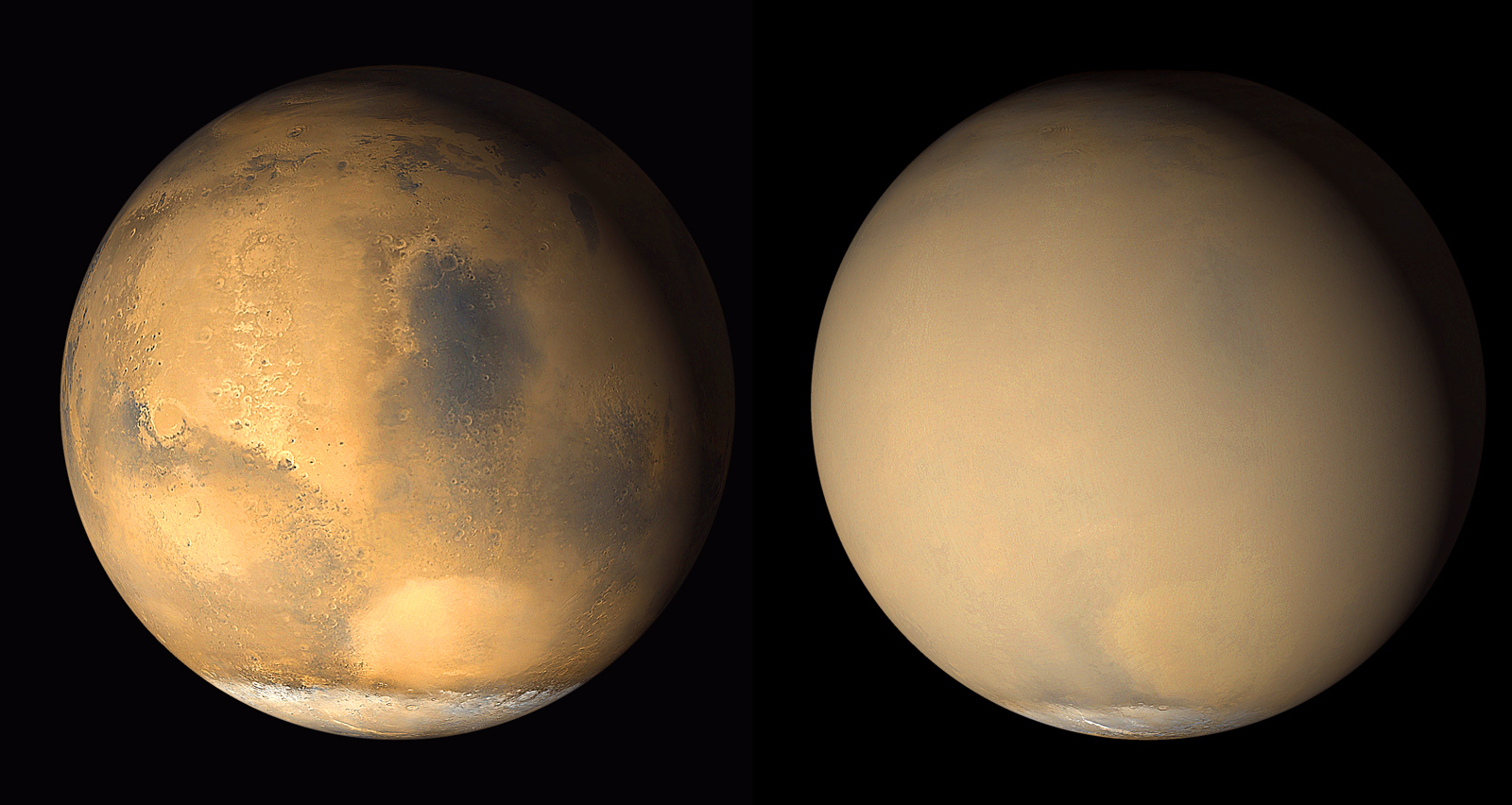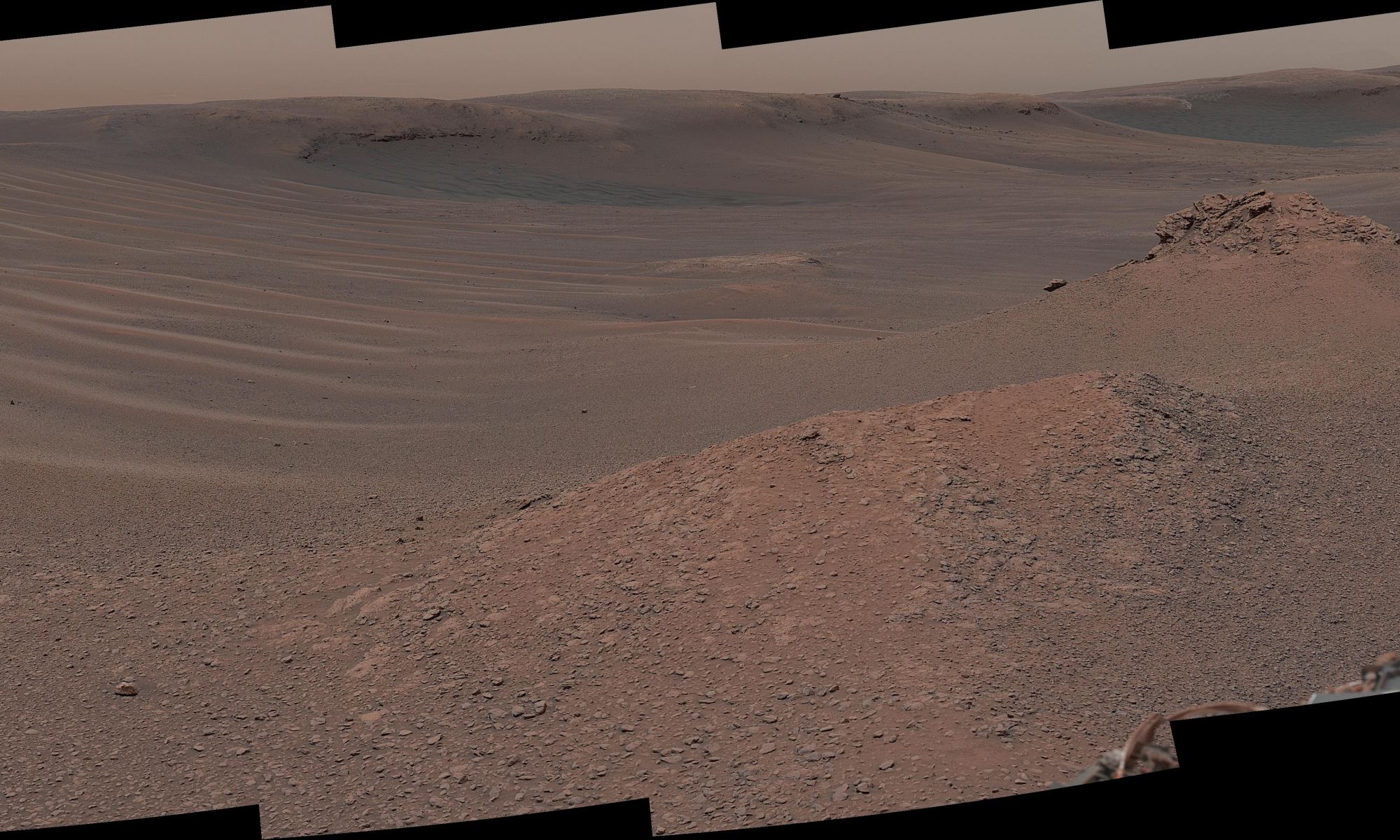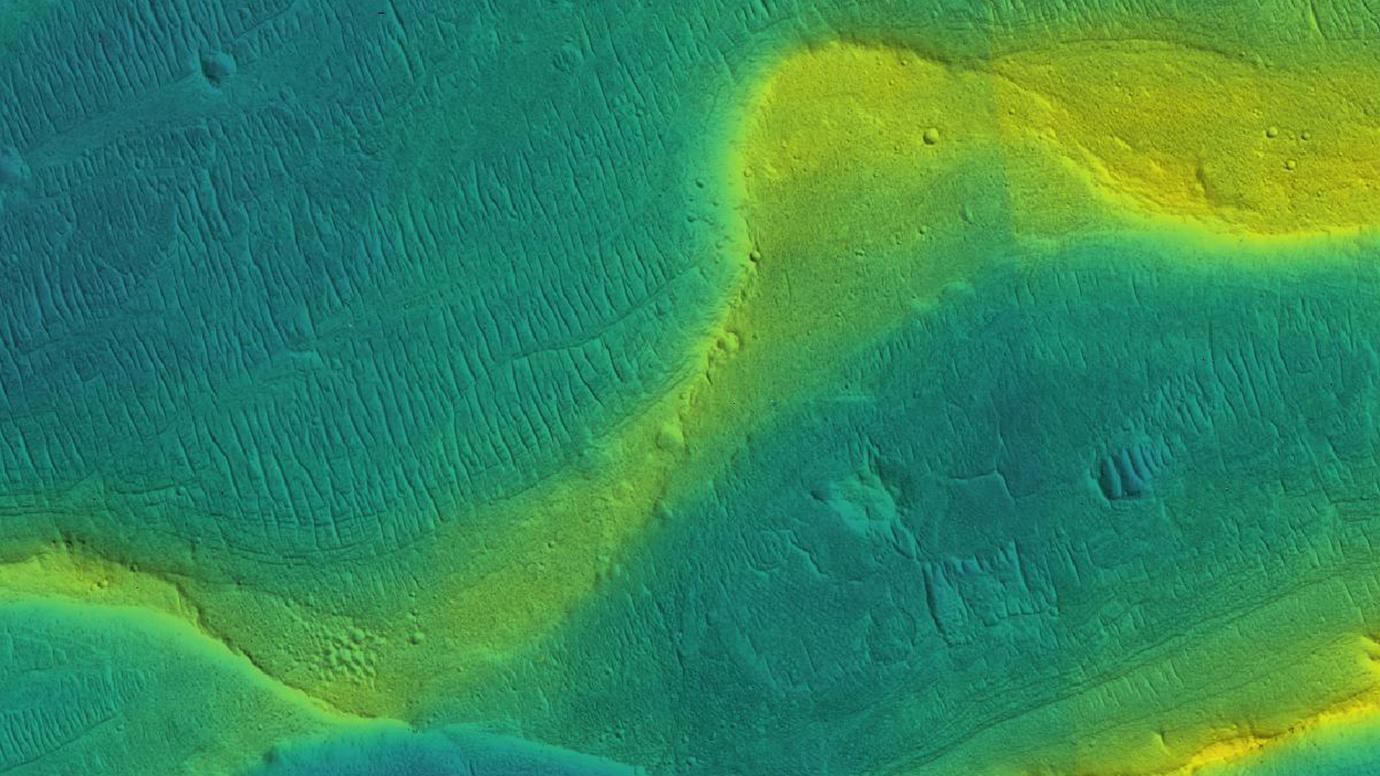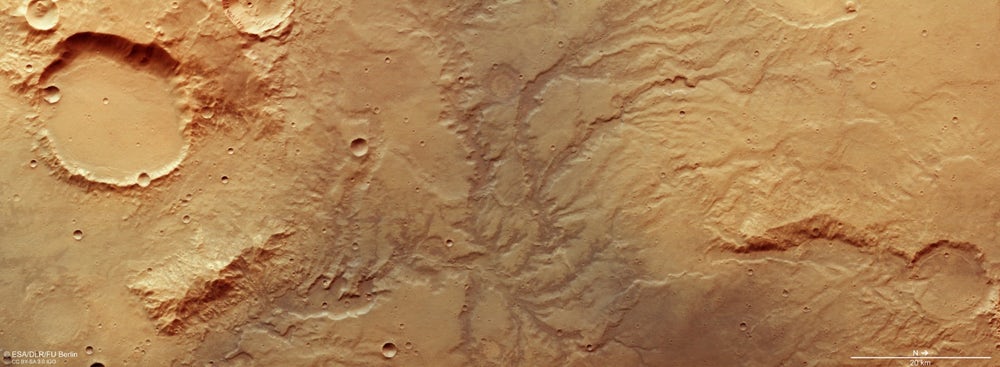One of the hardest things to reconcile in science is when new data either complicates or refutes previously findings. It’s even more difficult when those findings were widely publicized and heralded around the community. But that is how science works – the theories must fit the data. So when a team from JPL analyzed data from Mars Express about the Martian South Pole, they realized the findings announced in 2018 about subsurface lakes on Mars might have been more fraught than they had originally thought.
Continue reading “Potentially More Subsurface Lakes Found on Mars”What’s Causing Those Landslides on Mars? Maybe Underground Salt and Melting Ice
Changes in Mar’s geography always attract significant scientific and even public attention. A hope for signs of liquid water (and therefore life) is likely one of the primary driving forces behind this interest. One particularly striking changing feature is the Recurring Slope Lineae (RSL) originally found by the Mars Reconnaissance Orbiter (MRO). Now, scientists at the SETI Institute have a modified theory for where those RSLs might develop – a combination of water ice and salt just under the Martian surface.
Continue reading “What’s Causing Those Landslides on Mars? Maybe Underground Salt and Melting Ice”Astronauts Will be Able to Extract Fuel, Air, and Water From Martian Brine

A little over a decade from now, NASA plans to send astronauts to Mars for the first time. This mission will build on decades of robotic exploration, collect samples from the surface, and return them to Earth for analysis. Given the immense distance involved, any operations on the Martian surface will need to be as self-sufficient as possible, which means sourcing whatever they can locally.
This includes using the local water to create oxygen gas, drinking water, and rocket fuel, which represents a challenge considering that any liquid water is likely to be briny. Luckily, a team of researchers from the McKelvey School of Engineering at Washington University at St. Louis (WUSTL) has created a new type of electrolysis system that can convert briny water into usable products while also being compact and lightweight.
Continue reading “Astronauts Will be Able to Extract Fuel, Air, and Water From Martian Brine”Mars Might Have Lost its Water Quickly

Mars is an arid place, and aside from a tiny amount of water vapour in the atmosphere, all water exists as ice. But it wasn’t always this arid. Evidence of the planet’s past wet chapter dots the surface. Paleolakes like Jezero Crater, soon to be explored by NASA’s Perseverance Rover, provide stark evidence of Mars’ ancient past. But what happened to all that water?
It disappeared into space, of course. But when? And how quickly?
Continue reading “Mars Might Have Lost its Water Quickly”Martian Features Were Carved by Glaciers, not Flowing Rivers
Orbiters are giving us a chance to study the surface of Mars closely, and some of the features that pop to prominence are dry river channels. There are over 10,000 of them. But a new study suggests that glaciers on ancient Mars are responsible for many of them.
According to the study, those glaciers and the water flowing under them are resonsible for carving out some of those riverbeds, rather than free-flowing rivers.
Continue reading “Martian Features Were Carved by Glaciers, not Flowing Rivers”Mars Doesn’t Have Much of a Magnetosphere, But Here’s a Map

Even though Earthling scientists are studying Mars intently, it’s still a mysterious place.
One of the striking things about Mars is all of the evidence, clearly visible on its surface, that it harbored liquid water. Now, all that water is gone, and in fact, liquid water couldn’t survive on the surface of the Red Planet. Not as the planet is now, anyway.
But it could harbour water in the past. What happened?
Continue reading “Mars Doesn’t Have Much of a Magnetosphere, But Here’s a Map”The Global Dust Storm that Ended Opportunity Helped Teach us how Mars Lost its Water

The enduring, and maybe endearing, mystery around Mars is what happened to its water? We can say with near-certainty now, thanks to the squad of Mars rovers and orbiters, that Mars was once much wetter. In fact that planet may have had an ocean that covered a third of the surface. But what happened to it all?
As it turns out, the global dust storms that envelop Mars, and in particular the most recent one that felled the Opportunity rover, may offer an explanation.
Continue reading “The Global Dust Storm that Ended Opportunity Helped Teach us how Mars Lost its Water”Curiosity has Finally Sampled a Clay-Rich Region on Mars

It’s hard to believe that MSL Curiosity has been on Mars for almost seven years. But it has, and during that time, the rover has explored Gale Crater and Mt. Sharp, the central peak inside the crater. And while it has used its drill multiple times to take rock samples, this is the first sample it’s gathered from the so-called ‘clay unit.’
Continue reading “Curiosity has Finally Sampled a Clay-Rich Region on Mars”Rivers on Mars Flowed for More Than a Billion Years

The ancient climate of Mars is a mystery to scientists. Even with all we’ve learned about Mars, it’s still difficult to explain how lakes and rivers existed. A new study shows that Martian rivers were swollen with runoff and that they flowed far later into the planet’s history than previously thought.
The question is, how did the Martian climate create these conditions?
Continue reading “Rivers on Mars Flowed for More Than a Billion Years”Signs that Ancient Rivers Flowed Across the Surface of Mars, Billions of Years Ago

Billions of years ago, Mars was likely a much warmer and wetter place than the cold, dry, barren world we see today. Whether there was life there or not remains an open question. But there’s a massive, growing wall of evidence showing that Mars may have had the necessary conditions for life in the past, including at least one system of river valley networks.
Continue reading “Signs that Ancient Rivers Flowed Across the Surface of Mars, Billions of Years Ago”


